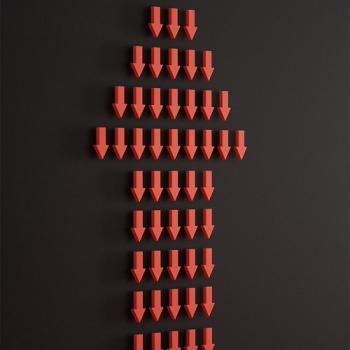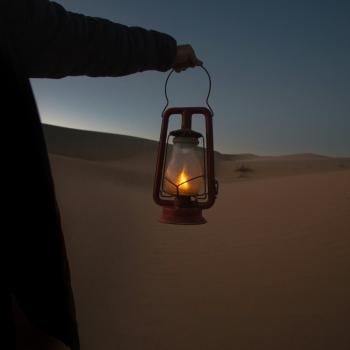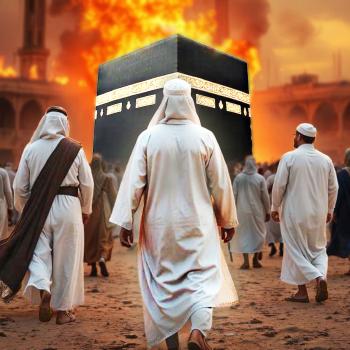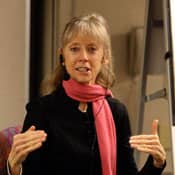The first time I asked the question 'Who am I?' I was 21 years old. I'd just graduated from college, and by sheer luck, managed to get a job writing for a famous alternative newspaper. The job was scary; it put all my skills on the line. Even scarier was the fact that the people I was meeting in this new grown-up world all seemed to have fully formed personae. They knew exactly who they were and what they wanted, while I didn't seem to have a clue. Or so it seemed.
I was in a full-blown youthful identity crisis. So one day, using my journal, I embarked on an inquiry. "Who am I really?" I wrote. "What is really true about me? What defines me? Am I my body (good hair, nice skin, crooked teeth, legs that aren't as long as they ought to be)? Am I what other people think of me, my popularity and reputation? Am I my emotions, which take me all over the place? Am I my taste in music, my political opinions? Who is the real me?"
I had no idea that I was asking one of life's Big Questions. What struck me was the fact that when I looked for an answer, nothing definitive showed up. I would ask the question "Who am I?" and instead of a nice reassuring answer—"I'm a really smart and attractive and serious young woman," or "I'm a person who is destined to make major breakthroughs in consciousness," or even, "I'm a journalist"—I would either feel completely blank or I would feel splintered by the many different layers that I seemed to shift in and out of. There was the "me" who felt young and agile and physically capable and strong. And then there was the part of me that would get lost in the questions and thoughts that were constantly streaming through my mind. At times I could also sense that there was a part of me who really had no opinion at all, who seemed to function as an observer, an inner camera who seemed to be watching the whole shifting show. And, on a really good day, I could feel something deep within me that was happy, really happy, for no reason at all. So, which part was really me? The "true" me? I hadn't a clue.
The Five Sheaths
Years later, when I began to read the texts of yoga philosophy, I learned that my confusion about the multiple parts of my "self" wasn't so strange after all. In the Taitteriya Upanishad, an ancient Tantric yoga text, a human being is described as having five 'sheaths' or koshas that interpenetrate each other, encasing the soul like the layers of an onion. The outermost layer of the onion is the physical body, which the sages called the Food Sheath because not only is it made of the food we take in from the earth, but because it will ultimately become food for other creatures. Surrounding the Physical Sheath, interpenetrating it, and transcending it are the three layers of the subtle body, the Pranamaya kosha, or Vital Energy Sheath, the Manamaya Kosha, or Mental Sheath, and the Vijnanamaya kosha, or Wisdom Sheath. Deeper than these is the Anandamaya Kosha, the Bliss Sheath. It was that deep layer of myself that my inquiry had managed to touch.
According to the sages of yoga, any real answer to the question "Who am I, really?" or "What is the meaning of my life?" involves looking into these sheaths, which are also called 'bodies' or 'selves.' To be fully empowered in who you are means to bring all these bodies on-line, as it were. And this takes practice, because though all of sheaths are 'firing' at all times, most of us only have easy, conscious access to one or two. For instance, though you certainly identify yourself largely with your physical body—defining yourself as 'fat' or 'thin', 'strong' or 'weak', 'good looking' or 'unattractive'—the fact is that you probably spend much more time in the Mental Sheath, caught up in thoughts and other forms of mental activity. Once you've learned how to recognize how it feels to be 'in' one of these bodies rather than another, you not only have an expanded sense of self, you have far more power over your choices and reactions to events.
There are different ways to work with the koshas. In classical Jnana Yoga (the Yoga of Understanding, also known as the Direct Path) there is a practice that involves deconstructing all your ideas about who you are by breaking your identification with each kosha, or layer until you eventually transcend them and find a state of pure awareness and bliss.
Bringing Consciousness to All of Ourselves
Though this practice can be a powerful meditation, most modern yogis aren't seeking to transcend the body and mind, at least not as a way of life. Rather, they want to be free to live with power and love within the body and mind. For those yogis, the map of the koshas is a tool we can use to bring consciousness to all these layers of ourselves. The map helps you recognize how each of these layers affects the others, and ultimately to find out how to unlock the hidden power and gift in each of these layers.





